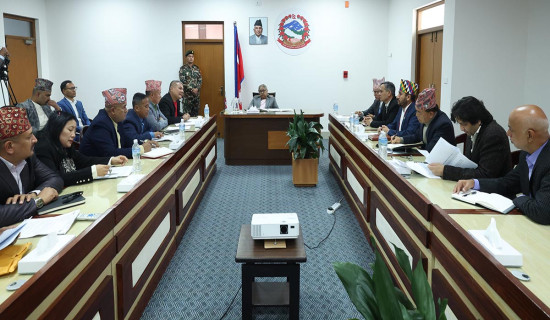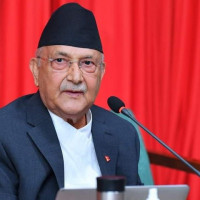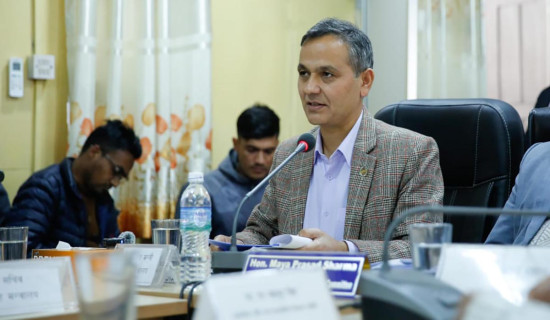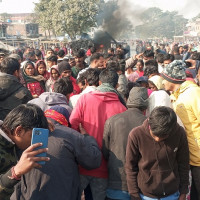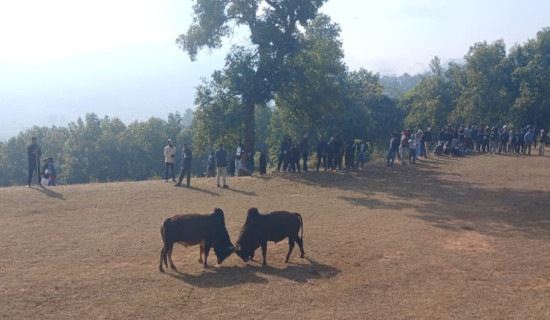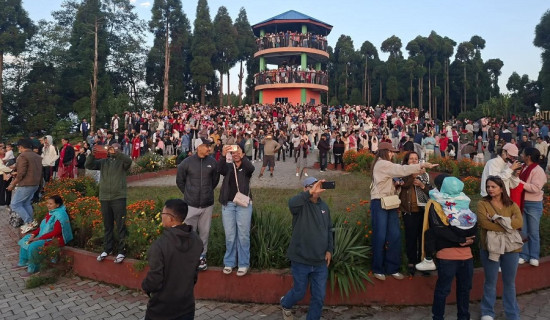- Thursday, 1 January 2026
Political Intrigue In Nepal
Some significant events are riddled with hidden motives and conspiracy theories. For example, some people believe that NASA faked a moon landing to win the space race, almost like a movie plot. But what if I told you that these mysterious plots aren't just in movies; they can also shape real-world politics? Here, my attempt is to sketch Nepal’s political terrain in the light of conspiracy theory and observe and make sense of its practice.
Decoding Nepal's politics is indeed confusing. Imagine this: a party named Congress holds the most seats in Nepal's decision-making hub—a hefty 88 seats. You'd expect them to lead, but nope. Instead, a smaller group known as the Maoists, with only 32 seats, is calling the shots. How does that add up? Well, the government's survival is like a complex series of negotiations and discussions. How’s the catch? If any of the smaller parties back out, the government might kiss the dust. And wait, there's more—the head honcho, the Prime Minister, is facing charges of rule-breaking and dishonesty. Shockingly, many of these problems stem from past rules and administrations. But even when the opposing side raises concerns, it's like no one is truly listening. It's as if the rules are there, confined to the book but not for practice.
Reality check
The constitution dilemma needs to be decoded because it has a hidden layer. Some people are questioning the constitution that guides the nation. They doubt the big players who approved it in the middle of the night when everyone was asleep. And that’s not all—the draft of the constitution took eight long years and billions of dollars but was approved in just eight minutes during a late-night meeting. The time to prepare and approve it in a hurry left many to wonder. It seemed like a riddle and a conspiracy.
Those who drafted and ratified the constitution are aware of its origin and significance. The question is: is it just? But on closer look, it seems to favour certain groups. To be honest, the party loyalists are the ones from whom the constitution benefited. The constitution, to their advantage, created problems in families and society. To a great extent, politics became biassed due to this, and millions of young people left the nation for jobs abroad, which is the nation’s true workforce. It also became a cause for family conflicts and the loss of culture and traditions; an alarming trend is now on in the divorce rate every year. A third problem is that some of those who go abroad for work return in coffins. Qatar, a popular destination for Nepali workers, has thus become a hub of woes. Nonetheless, it has a bright side too, because the hub is a major source of foreign currency. On this side, parliament makes noise in its sessions fed on the same hard currency in millions. But parliament sounds more concerned about the politicians than the people.
Historical peek
Looking back at the past and our neighbours is also necessary. The southern neighbour had a significant role in shaping past events, such as the one in 1951 against the Ranas. But today, it feels like we are trapped in a cycle of political drama. Did the major parties compromise their values for the sake of power with that neighbour? There is the story of GP Koirala. He came back after being in political exile, and he also admitted to having printed and circulated fake currency. He had a noble excuse for this—that was to support the party workers hiding with him in India. Yet he managed to become the first leader elected by the people after a few years. Think of fake money on one hand and think again of the same person leading the nation on the other—they don’t match, do they? And let’s not forget about the Maoists. Once branded as terrorists, they are now rewarded with a power crown. More twisted is the mystery of the royal massacre. The same king, Birendra, who was a ruler and an administrator, had a soft spot for the Maoists. He had said, “They are our citizens too!” Thus, they escaped safely, or else they would have been buried in a single graveyard before the king and his family members faced tragedy. One reason for the king’s tragic end was said to be his lack of support for the controversial recent citizenship bill. All these are like a huge puzzle waiting to be solved.
The story can go further back to the times of King Mahendra. Pandit Nehru, the prime minister of India then, seemed to have the power to predict the future of Nepal. In fact, he knew King Mahendra’s ambition and had said from Kashmir, “I foresee Nepal in political turmoil!” On this side, King Mahendra dissolved the ruling group and banned political parties that returned only after his death, about twenty years later. He opened a road link to the north at Kodari and wanted to improve relations with China, saying, “Communism cannot reach here in a car.” At the same time, he had given prominent communist leaders a position in his cabinet!
The need now is to find a way out of the confusion and have a consistent vision. The parties in power often change their stance when out of power, shifting their priorities. This affects the country’s stability. One example is of two leaders, BP Koirala and GP Koirala. If BP kept away from the communists, GP joined them to rise up against King Birendra for the restoration of multiparty democracy. Another example is Nepal as a “Zone of Peace” proposed by King Birendra. Whether right or wrong, the theme had been supported by over 100 nations, except India. In its place is now the Truth and Reconciliation Bill for the victims of the Maoist insurgency. It hopes to solve a bigger puzzle.
Solution
There are solutions as well as challenges. Starting an honest dialogue is the first step in following the guiding principles of the Constitution. Transparency, integrity, and commitment are the second step. Political factions and influential citizens are the third force reducing the impact of conspiracy theories. All these together are the efforts and possibilities for stability and prosperity. Conspiracy theories and Nepal’s political landscape are intertwined in a web of complexity. As we try to unravel this intricacy, one truth becomes clear: unity, dialogue, and shared goals. By working together, Nepal can overcome the challenges of instability and emerge as a place of progress, peace, and happiness.
(Baral is a retired lecturer of English.)



